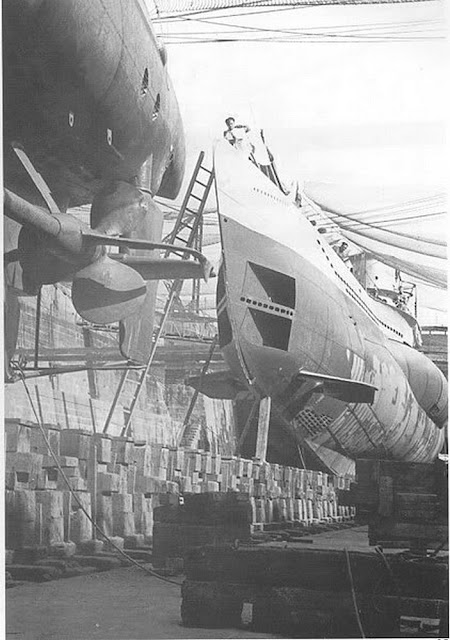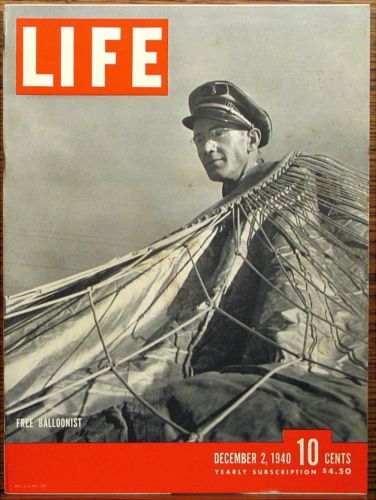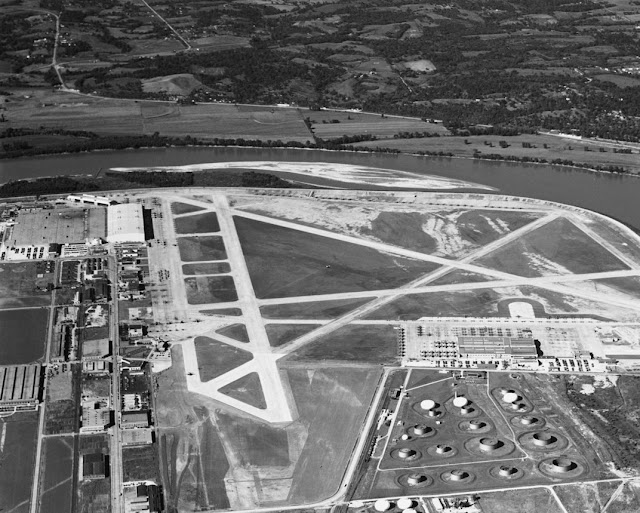Monday 2 December 1940
There is a report that 5,000 Italian troops have surrendered in northern Albania. The RAF bombs Salona.
On the Italian side, Mussolini is losing his nerve and thinking about seeking an armistice - he only began the invasion a month ago! -via German mediation. His rationale for continuing is that the Greeks have little war industry, and their supplies only come from the British. He is very upset with his military leaders, however, and considering sacking them.
European Air Operations: The Luftwaffe switches from Southampton to Bristol as its main target, sending 120 bombers against it. For the past month, the Germans have concentrated on a succession of moderate-sized cities to hammer two or more times in a row - Coventry, Birmingham, Southampton included. London still receives attention, but the Luftwaffe high command apparently has decided that there is more impact by destroying a single smaller city than gradually demolishing London.
RAF Coastal Command attacks Axis shipping off Norway, while RAF Bomber Command bombs the U-boat pens at Lorient.
 |
| U-37 in drydock in Lorient, France, 1940 (Mannewitz, Federal Archive). |
Convoy HX 90 is attracting the attention of every U-boat in the vicinity. Spotted by U-101 about 926 km south of Iceland on 1 December, the convoy is in the "gap" between full escort from Canada and from Great Britain (poor weather has delayed the UK escort). U-101 continues to shadow the convoy, but just after midnight today U-47 joins, followed by others.
Making the day even more interesting is that HX 90 is not the only convoy attacked. Convoy OB 251 is nearby (relatively speaking). Some U-boats attack it instead, and there are some transfers between the two convoys of escorts from OB 251 to HX 90. U-99 attacks ships in both convoys. Due to all the different attacks, the night is a confused jumble, but one thing is certain: it is a bad night for the British. U-37 makes an independent attack on Convoy OG 46, sinking two ships.
There also is an Italian submarine Argo (pennant number AO) in the vicinity, but it misses the party. Basically, today is a U-boat bonanza in the mid-Atlantic. Everything is coordinated by U-Boat Command (BdU), in the person of Rear Admiral Karl Dönitz in Paris.
Just to summarize, below are the submarines attacking today and early on the 3rd.
U-Boats which make up the HX 90 wolfpack:
- U-101 (Kptlt. Ernst Mengersen)
- U-47 (Kptlt. Gunther Prien)
- U-95 (Kptlt. Gerd Schreiber)
- U-52 (Kptlt. Otto Salman)
- U-94 (Kptlt. Herbert Kuppisch)
- U-99 (Kptlt. Otto Kretschmer)
- U-43 (Kptlt. Wolfgang Lüth)
- U-37 (Kptlt. Asmus Nicolai Clausen)
U-99, on its way to attack HX 90, encounters an Armed Merchant Cruiser, HMS Forfar, which is guarding OB 251 and pumps five torpedoes into it, sinking it. U-43 also attacks OB 251 and sinks two ships, surviving a ramming attempt.
The ships sunk and damaged:
- Ville D'Arlon (Belgian, 7555 tons, sunk by U-47)
- Kavak (UK, 2782 tons, U-101)
- Lady Glanely (UK, 5497 tons, U-101)
- Conch (UK, 8376 tons, damaged by U-47)
- Dunsley (UK, damaged by U-47)
- Conch (damaged by U-95)
- HMS Forfar (UK, 16,402 tons, sunk by U-99)
- Tasso (UK, 1,586 tons, sunk by U-52)
- Goodleigh (UK, 5448 tons, sunk by U-52)
- Stirlingshire (UK, 6022 tons, sunk by U-94)
- Wilhelmina (UK, 6725 tons, sunk by U-94)
- Victoria City (UK, 4739 tons, sunk by U-140)
- Conch (finally sunk by U-99)
- Pacific President (UK, 7113 tons, sunk by U-43)
- Victor Ross (UK, 12,247 tons, sunk by U-43)
- W. Hendrik (UK, 4360 tons, sunk by Luftwaffe Focke-Wulf Fw 200 aircraft)
- Gwalia (Swedish, 1258 tons, sunk by U-37)
- Jeanne M. (UK, 2465 tons, sunk by U-37)
- HMS Forfar: 172 dead, including Captain Norman Cyril Hardy
- Goodleigh: one crewman dead, 37 survivors
- Kavak: 25 crewmen dead, 16 survivors
- Lady Glanely: 33 dead, no survivors
- Ville d'Arlon: 56 dead, no survivors
- Tasso: 5 dead, 27 survivors
- Wilhelmina: 5 dead, 34 survivors
- Victoria City: 43 dead, no survivors
- Pacific President: 51 dead, no survivors
- Victor Ross: 44 dead, no survivors
- Samnanger: 30 dead, no survivors
- Galia: 16 dead, 6 survivors
- Jeanne M: 7 dead, 19 survivors
Elsewhere, 483-ton British coaster Jolly Girls hits a mine and sinks off Newcastle upon Tyne. Everybody survives.
The Luftwaffe (Heinkel HE 115 seaplanes of KGr 406) sinks 276-ton British trawler Kilgerran Castle in the Northwest Approaches.
The Kriegsmarine lays mines off of Dover.
Convoy FN 348 departs from Southend, Convoy OB 253 departs from Liverpool.
Royal Navy destroyer HMS Tynedale (L 90, Lt. Commander Hugo E. F. Tweedie) and minesweeping trawler HMS Ophelia (T 05, Captain S. Bennett) are commissioned.
 |
| U-99 in drydock. |
A Board of Inquiry begins at Gibraltar over Admiral James Somerville's decision to disengage his cruisers at the Battle of Cape Spartivento. The incident involved a damaged cruiser and other forces facing Italian battleship Vittorio Veneto. It was a minor Italian victory. The court is led by Admiral of the Fleet William Boyle, Earl of Cork and Orrery.
Anglo/Spanish Relations: The British sign a financial agreement with Spain that essentially is a care package. Franco is engaged in a delicate dance between the Allies and Axis in which he is attempting to stay out of the conflict but receive anything that he can from both sides. Around this time, Hitler drafts a letter to Franco requesting the right of transit for German troops to attack Gibraltar, but Franco replies that he wants to wait until Great Britain "was on the point of collapse."
 |
| A Tom Brigance design, as shown in Harper's Bazaar, photographed by Hungarian émigré Martin Munkácsi. |
Japanese Military: Several promotions and command changes. Crown Prince Yi Un becomes a lieutenant general in the Japanese Army, while Lieutenant General Masaharu Homma becomes commander of the Taiwan Army. Colonel Seiichi Miyamoto becomes the commanding officer of the Japanese Unit 516 chemical weapons research unit based in Qiqihar, Nenjiang Province, China, replacing Colonel Oyanazu Masao.
US Military: Henry "Hap" Arnold becomes a permanent Brigadier General. Arnold, the head of the Air Board, is not a Roosevelt favorite because, in Roosevelt's own words, Arnold does not "play ball." However, Arnold is a huge impetus behind the elevation in the status of the US Army Air Corps and Roosevelt needs him.
US Government: President Roosevelt and crony Harry Hopkins depart from Washington by train to Miami, where they will conduct a tour of the Caribbean on the cruiser USS Tuscaloosa.
 |
| Life Magazine (cover "Free Balloonist"), 2 December 1940. |
December 1940
December 1, 1940: Wiking Division FormsDecember 2, 1940: Convoy HX 90 Destruction
December 3, 1940: Greeks Advancing
December 4, 1940: Italian Command Shakeup
December 5, 1940: Thor Strikes Hard
December 6, 1940: Hitler's Cousin Gassed
December 7, 1940: Storms At Sea
December 8, 1940: Freighter Idarwald Seized
December 9, 1940: Operation Compass Begins
December 10, 1940: Operation Attila Planned
December 11, 1940: Rhein Wrecked
December 12, 1940: Operation Fritz
December 13, 1940: Operation Marita Planned
December 14, 1940: Plutonium Discovered
December 15, 1940: Napoleon II Returns
December 16, 1940: Operation Abigail Rachel
December 17, 1940: Garden Hoses and War
December 18, 1940: Barbarossa Directive
December 19, 1940: Risto Ryti Takes Over
December 20, 1940: Liverpool Blitz, Captain America
December 21, 1940: Moral Aggression
December 22, 1940: Manchester Blitz
December 23, 1940: Hitler at Cap Gris Nez
December 24, 1940: Hitler at Abbeville
December 25, 1940: Hipper's Great Escape
December 26, 1940: Scheer's Happy Rendezvous
December 27, 1940: Komet Shells Nauru
December 28, 1940: Sorge Spills
December 29, 1940: Arsenal of Democracy
December 30, 1940: London Devastated
December 31 1940: Roosevelt's Decent Proposal
2020

No comments:
Post a Comment